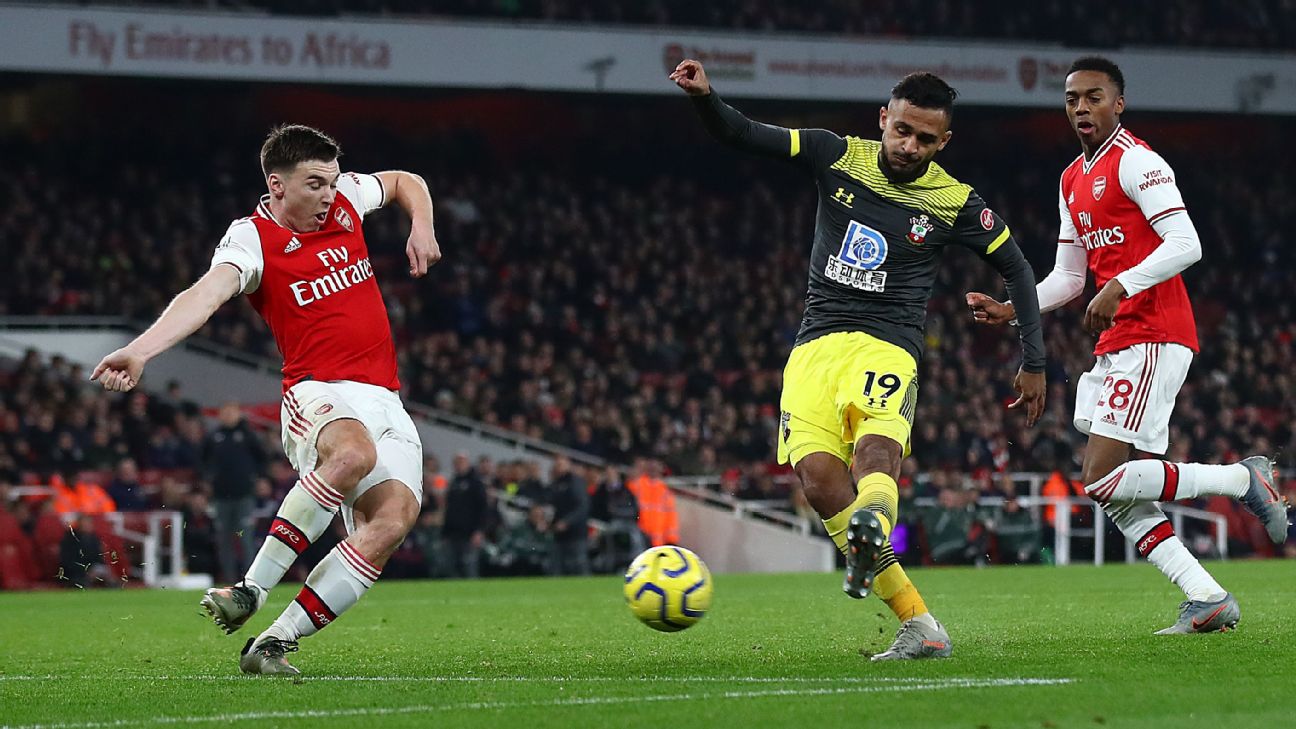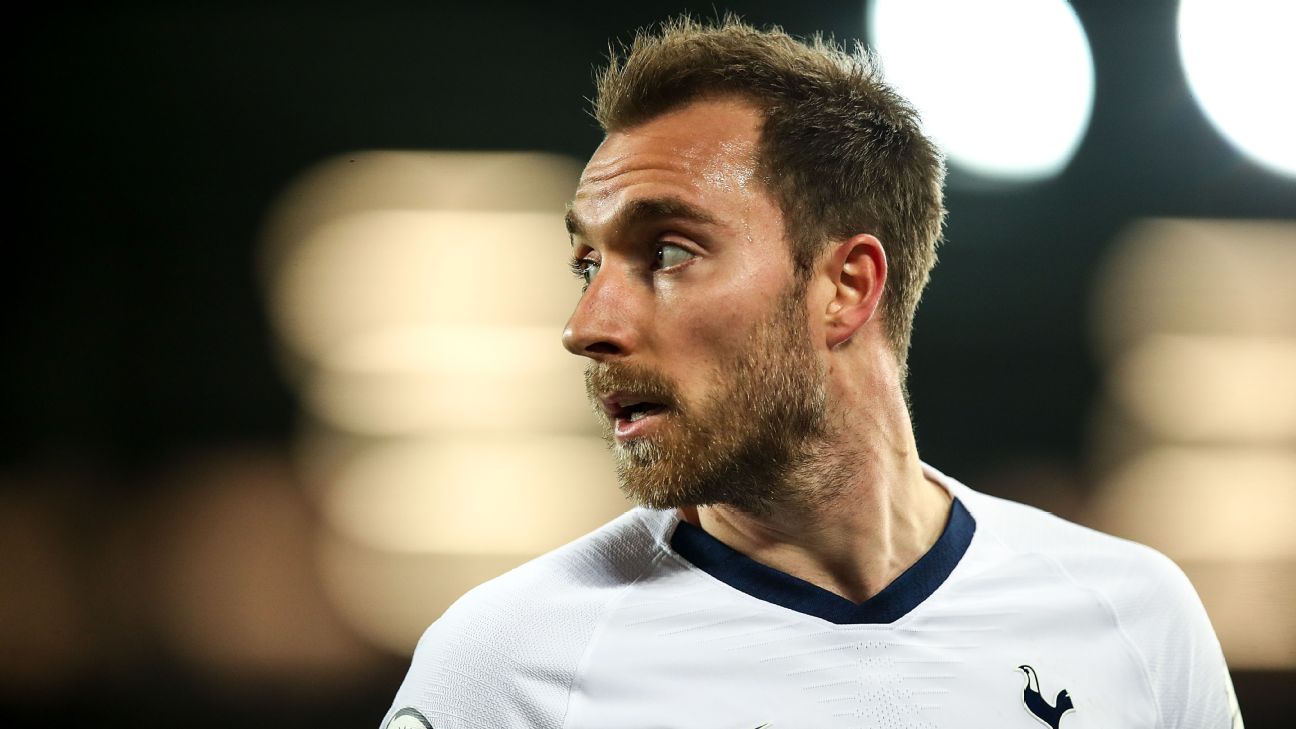Products You May Like
We’re more than one-third of the way into the Premier League season and if the league operated under NBA or MLB rules, teams would currently be scrambling to figure out which players they could shuffle in and out of their doors. Title-chasers would be seeking out the final piece to put them over the top. Champions League contenders would be searching for starters. Mid-table teams would consider selling off stars for future prospects. Oh, and relegation fighters would be hunting for anyone who could provide even a minor upgrade.
Player-for-player swaps rarely happen in soccer because there are too many moving pieces involved with transfers. There’s the negotiation with the team and then, the negotiation with the player for his new contract. A swap deal doubles the number of dealings because, unlike in the NBA or MLB, contracts don’t get traded. But what if we greased the wheels a bit and made player movement easier? What if Premier League teams could trade players and their contracts?
– Ogden: How everything fell apart at Man United
– Davis: The pros and cons of MLS expansion
– Marcotti: Can Guardiola fix what’s been exposed at Man City?
Here are five completely hypothetical deals that we think would benefit both sides. For as fun as it would be to contemplate things like “Naby Keita for Leroy Sane“, we’ve also tried to stay away from unrealistic trades between teams that are in direct competition with each other.
This is the most NBA-esque trade of the bunch. One team, with the financial capacity to absorb it, makes a “win-now” move for an older player on the last year of his deal, while the other acquires a prospect with the potential to contribute for a long time. Bear with me.
Dalot, 20, has barely played for United after the summer acquisition of Aaron Wan-Bissaka from Crystal Palace. Tottenham, meanwhile, haven’t really replaced Kieran Trippier after he went to Atletico Madrid. Jose Mourinho once said that Dalot had “fantastic potential” and even suggested he could be Manchester United’s right-back for the next decade. That’s not gonna happen but Mourinho’s the manager in North London now, so why not shift that prediction over to Tottenham?
Eriksen’s Spurs contract expires at the end of the season, and it seems highly unlikely that he’ll be back with the club this time next year. So he goes to Manchester for the rest of the season, and potentially beyond, if the club and player get along. Other than Paul Pogba, United have no other midfielders who can, well, pass the ball. Scott McTominay and Andreas Pereira sport some mediocre-at-best completion percentages despite both being relatively conservative passers. Marcus Rashford, the team’s main goal-scoring threat, and fullback Ashley Young, 34, lead the team in passes completed into the box. The addition of Eriksen would immediately fix that. Since 2014 in Europe’s Big Five leagues, only Lionel Messi has completed more passes into the penalty area.
West Ham’s Lukasz Fabianski for Chelsea’s Antonio Rudiger
Time for the elephant in Stamford Bridge: Since he arrived at Chelsea in summer 2018, and for a world-record fee for a goalkeeper, Kepa Arrizabalaga has been one of the worst shot-stoppers in the Premier League. Chelsea have conceded significantly more goals than expected goals in each of the past two seasons, and Kepa’s perhaps been the biggest culprit. Basic metrics like save percentage put him near the bottom of the league, and more advanced systems like post-shot xG, which takes into account the difficulty of the shots a keeper faces, do the same. Kepa has the look and the size of a great keeper, but over the past 18 months he’s allowed a bunch of goals on shots that the average keeper would save.
Fabianski, on the other hand, had one of the best keeping seasons in Premier League history for West Ham last year, and the idea of “Flappy-hand-ski” has quickly become a myth. He’s 34 and currently injured, but keepers age more gracefully than outfield players, and even if Chelsea weren’t keen to replace Kepa, the Pole could at least provide some stiff competition. With a talented, young, and deep squad boasting multiple capable players at seemingly every position, a shot-stopping keeper would provide a more immediate, obvious upgrade than anywhere else on the field.
West Ham would be trading away arguably their most important player from last season in exchange for a German international who was also lights-out for much of last season. With the emergence of 21-year-old Fikayo Tomori and 25-year-old Kurt Zouma at center-back, plus 23-year-old Andreas Christensen waiting in the wings, Chelsea can afford to offload the 26-year-old Rudiger. The Hammers have — by far — the worst defense in the league, but that’s not necessarily because of Fabianski’s injury. His backup, Roberto, has also saved an above-average number of shots. However, the team is allowing right around two xG per game.
They don’t need someone to stop the shots; they need someone to prevent the shots from happening in the first place.
We needed at least one multi-team trade, so here it is. Xhaka’s become persona non grata at Arsenal, but despite a number of high-profile, self-inflicted gaffes, he remains one of the best passers in the Premier League. Play a game of word association with Burnley and your time on Earth will likely expire before you even come close to landing on “passing.” Nick Pope is second on the team in passes completed into the attacking third; Nick Pope is also a goalkeeper. Xhaka would give Burnley something they’ve never had under Sean Dyche and he’s not clearly unfamiliar with the physical style of play that’s preferred at Turf Moor, either.
Dyche would hate to lose McNeill — just 20, he’s already the team’s leading creator — but Chris Wood and Ashley Barnes are the team’s two most important attacking pieces and Xhaka’s presence would provide some new attacking patterns that the team doesn’t currently have access to. For Leicester, McNeill gives the team some much-needed attacking depth, making them a little more robust against injury as they try to lock up a spot in the top four. His age also fits within the larger profile of the rest of the team.
As for Arsenal, they’ve lost most of their negotiating power re: the Xhaka situation, so they’ll just be happy to move him on. (They’ll also need to cover a significant portion of his contract even after they trade him because Burnley won’t be able to afford Xhaka’s full contract.) Iheanacho put up world-class attacking numbers in limited minutes with Manchester City a few years ago, but it just hasn’t happened for him at Leicester. He’s played just 92 Premier League minutes this year (including one start), both of them in December, and with each passing week it looks more likely that his performance at City was a product of the system. However, he’s still only 23, so Arsenal at least get a young lottery ticket in exchange for the former club captain.
With the team seemingly stuck in neutral — if not reverse — the club could use more low-cost, low-risk players with sky-high best-case-scenario potential.

Before the Champions League final, I told you about how Alisson led all Premier League keepers in a goals-saved-above-average model created by the company Stats Perform. The model simulates how every keeper in the league would fair against every shot taken across the entire competition and then compares them to each other. Alisson, of course, got hurt in Liverpool’s opening match of the season, but Adrian stepped in and did his best possible impression.
I’m speaking literally here: During his time as the starter, Adrian led the Premier League in the same goals-saved-above-average rating. Down near the bottom of that stat? Southampton’s Angus Gunn. Adrian would provide an immediate boost for the Saints, and for a team in a relegation fight, a keeper would be way easier to integrate on the fly than a field player.
Boufal is one of the best dribblers in the world, but he’s never been able to get consistent playing time with Southampton. At 24, he’s relatively young, he carries the ball as well as anyone in the Premier League and on a per-90-minute basis (from a limited sample size), he’s been one of the most effective creators, too.
Jurgen Klopp’s team still don’t have any great alternatives beyond the fantastic front three, and unleashing Boufal off the bench could provide a new dynamic. More importantly, though, this move checks the two most important Liverpool transfer boxes: 1. He plays for Southampton, and 2. He plays for a team that might get relegated.
If you squint hard enough, Everton have the outlines of a pretty good Premier League team. They press as well as any team not coached by Jurgen Klopp and Pep Guardiola. They’re near the top of the league in shots attempted per game, and they’re near the bottom of the league in shots allowed. In other words, they do what all dominant modern teams do: Win the ball back high up the field and make sure most of the action happens around your opponent’s goal rather than yours.
So what’s the issue? Well, they’re not able to do much with the ball after they win it back. Despite all the shots they take, they’re only in the middle of the pack for expected goals; put another way, they struggle to generate high-quality chances in any kind of attacking space. Enter Shelvey, who hasn’t played much for Steve Bruce but who is one of the best midfielders in the league at playing passes that take opposing defenders out of the play. Don’t expect Shelvey to do much else — see: him entering the doghouse of every manager he’s played for — but Everton have more than enough conservative midfielders to cover for his inadequacies.
Sigurdsson has been a fixture in the Everton starting XI this year, but he doesn’t quite fit the fast-paced style described above. The Magpies, however, seem to have settled into an uber-defensive style that tries to limit the chances allowed on both ends of the field. Sigurdsson is one of the best set-piece takers in the league, and for a team that’s last in the league in expected goals generated, his dead-ball dominance would be especially valuable.
